Wild caraway (Carum carvi), is another great addition to the growing list of amazing plants and herbs I never thought possible to be picked in the wild. It's a thing though, and if you come across some, like me, you might fall in love.
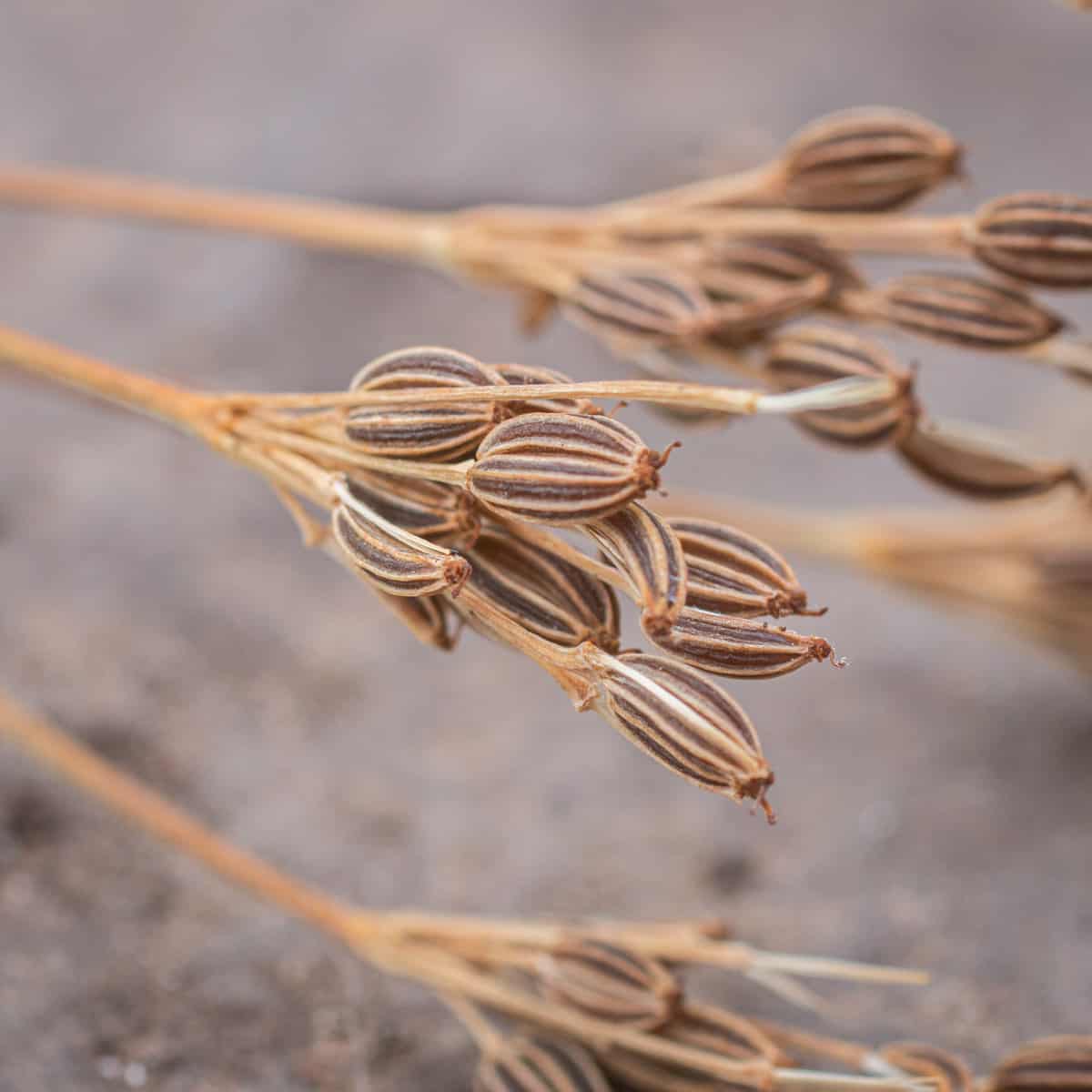
I knew nothing of caraway until I read about it in Incredible Wild Edibles, the latest book from my friend and foraging Yoda Sam Thayer. There were a number of new to me plants in the book, but none piqued my interest like wild caraway. There's a lot of herbs out there to pick, but one of the most useful I've come across was wild fennel, and if the caraway was anything like the fennel seed and leaves I was foraging in California, it was going to be great. I assumed the plants would be have a smaller seed, and a flavor with more of a wild cast than it's cultivated friends.
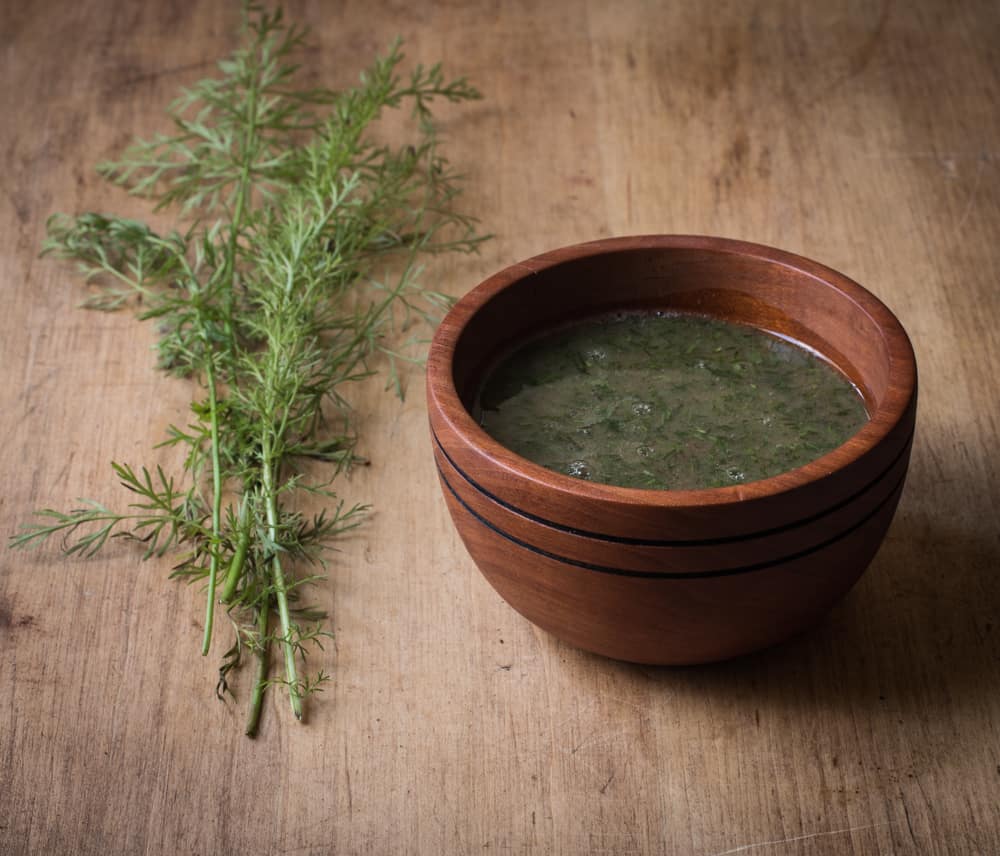
The only problem was finding the plants--a literal needle in a haystack the size of Minnesota. I'd never seen anything like them around, barring the old wild parsnip that's just about everywhere I hunt and on every road I drive on. It's in the carrot family though, so I did know I'd be looking for umbels, which are pretty easy to spot. I racked my brain for months over the 2017 winter trying to figure out where I could look.
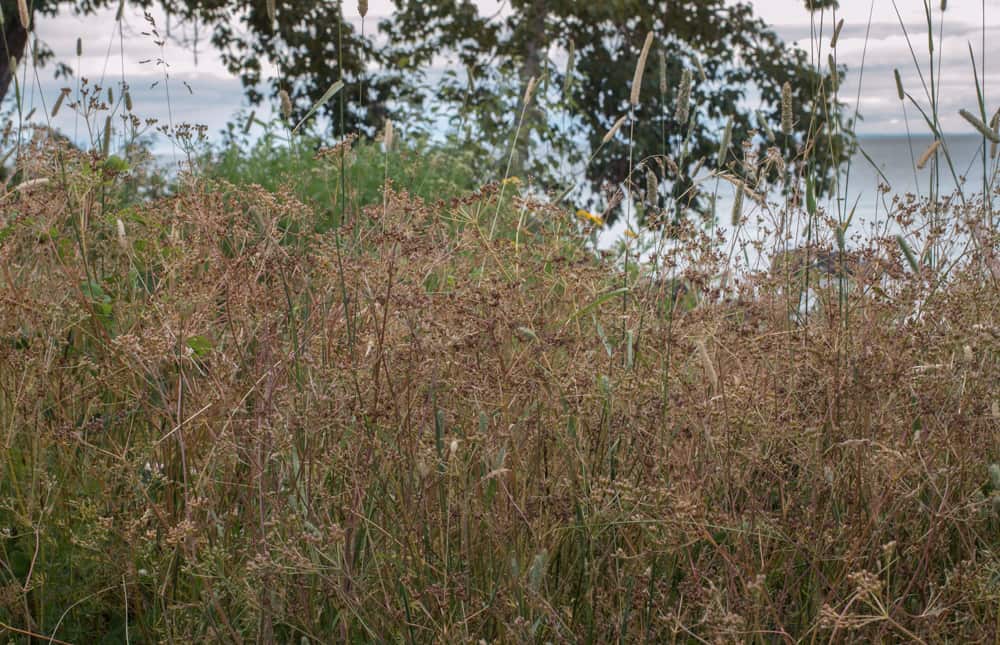
In the early summer of 2018 I bit the bullet, scheduled a day to hunt a few weeks in advance and set about doing as much research as I could to hedge my bet. The first resource I checked? Sam's book. I read the text carefully, picking apart every nugget of info I could, and then did something that Sam himself explained to me to do: use an atlas combined with topographic maps to pin-point possible areas to hunt. It was like a pirate treasure hunt, with a big X over a few possible patches of wild caraway on my treasure map. It worked.
After reading Sam's description and printing off a few close up pictures from online, I set off to a spot in Minnesota that had rocky shore lines. Before I'd even reached the destination I picked out, I was identifying wild caraway from my drivers seat using the rubber neck method (don't try that at home kids).
From there I found a secluded place to call my own: a scrubby, unloved stretch of desolate soil I like to think I've adopted. As I gather my caraway, I pick up the garbage and fast food bags passerby seem to enjoy flinging out the windows, too.
Picking out a destination I've never been to just to look for a new plant I've never found is not a game I typically win, so to find a couple nice patches in a day was the highlight of my month. It just goes to show you that a little pre-trip planning and research can change the way you hunt, and improve your chances of actually finding what you want.
Habitat
Wild caraway likes rocky slopes, and rocky soil. It can create great stands along road sides, and I found myself confusing it with wild parsnip at first until I got the wavy, runty shape of the umbels down.
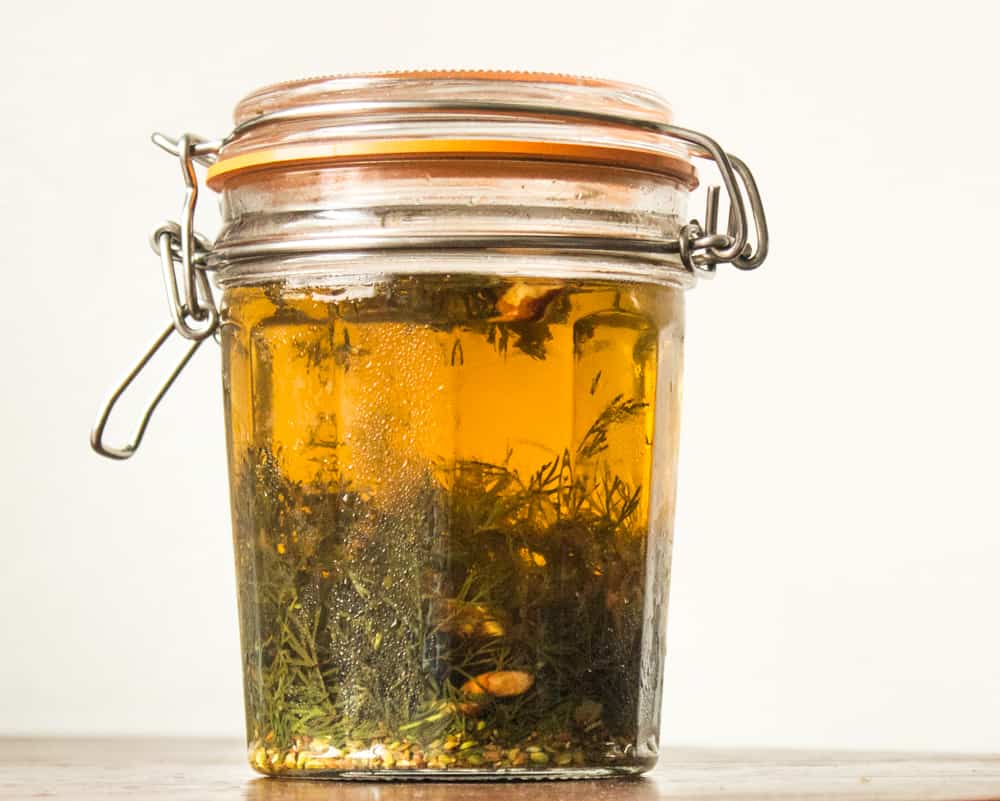
Look for wild caraway in the summer or fall
Just like other plants, when I'm looking for a patch of something new, I don't go looking for it in the season when the eating is the best, I want to look for plants when they enter the flowering stage, or a stage when they're showing extra characteristics to help me pick them out.
As plants enter their reproductive cycle, they're often taller (read as easier to see) and may have flowers, the presence of which can make identifying something go from impossible for a non-botanist like me, to pretty straight-forward when compared against a couple photos, for the most part.
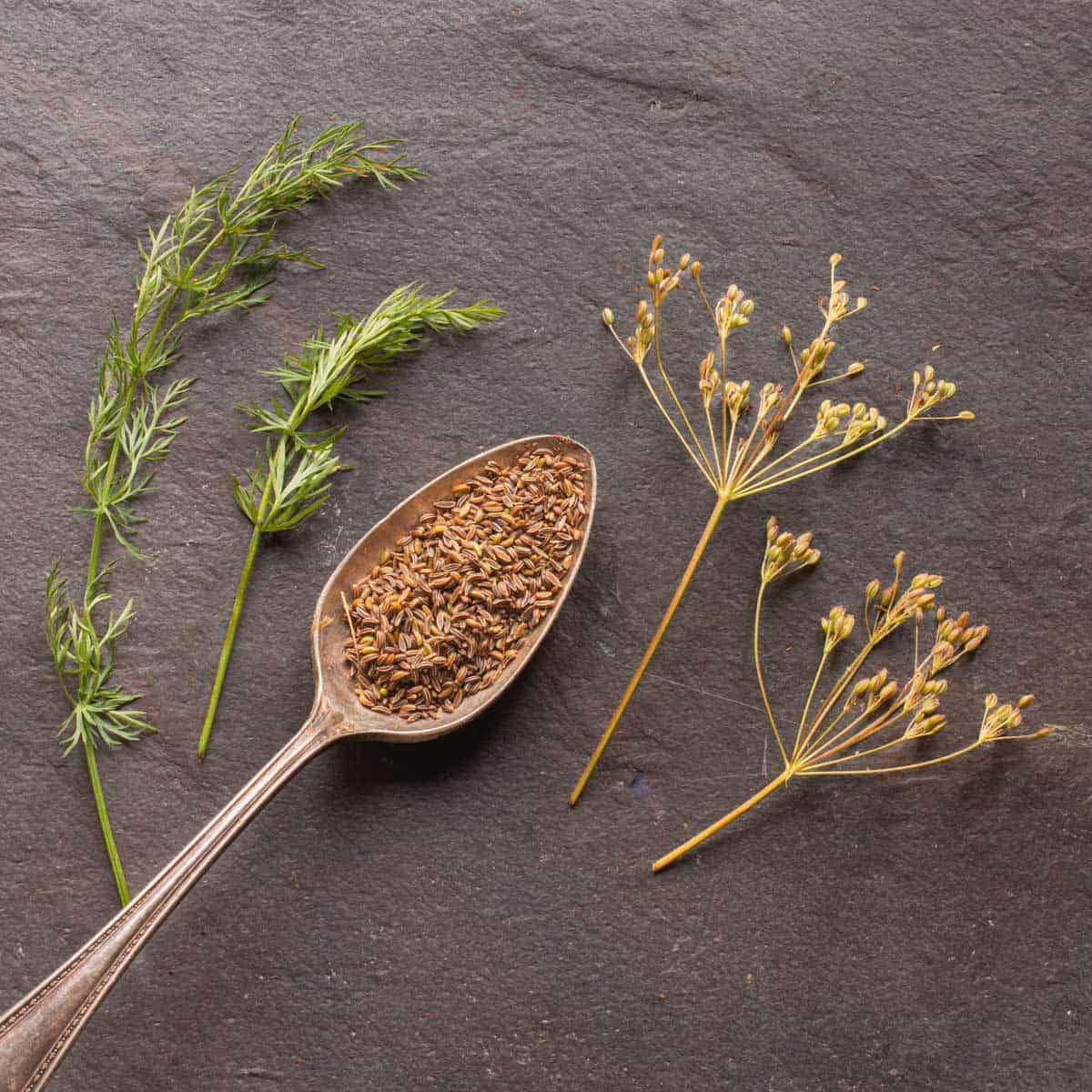
The height of the plant really helped me pick it out from the surroundings. Mature wild caraway is going to be just about waist-height. There aren't a lot of plants I've seen that have a mature height that barely comes to my waist, so remember that.
When you're looking for it to harvest the seeds, it'll be brown, and luckily enough, the caraway seemed to go brown faster than the other plants in the area in the early summer. The height, relatively early browning, combined with the wavy, irregular umbels made them stick out like a sore thumb.
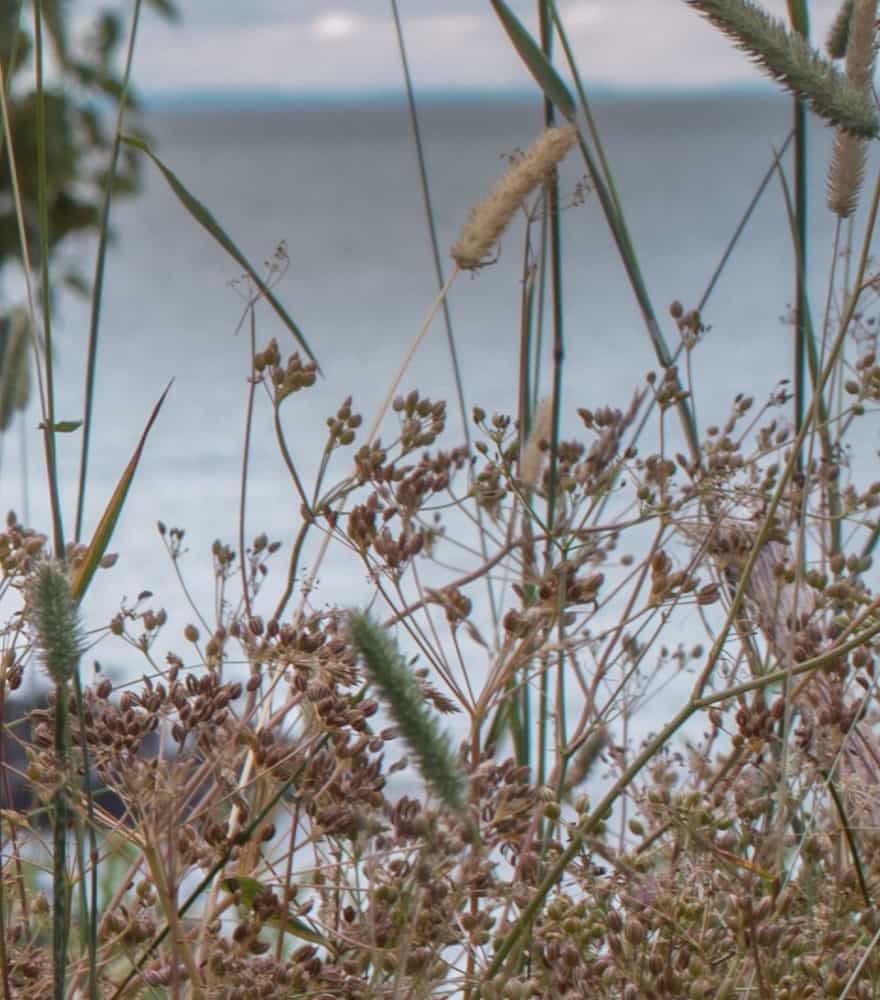
Harvesting
The fun part, and the labor intensive part. I can guarantee if you find some to pick you will never think of using caraway or cumin in exactly the same way. When the plants are mature, the seeds will fall off if you brush up against a plant. I liked to take a paper grocery bag with me, or a bucket attached to my waist or belt.
I grasp the stem gently, and bend it over the container, and gently shake the umbel or rub the seeds between my fingers to remove them. In my best patch, I can get about 2 cups of caraway seeds an hour like this.
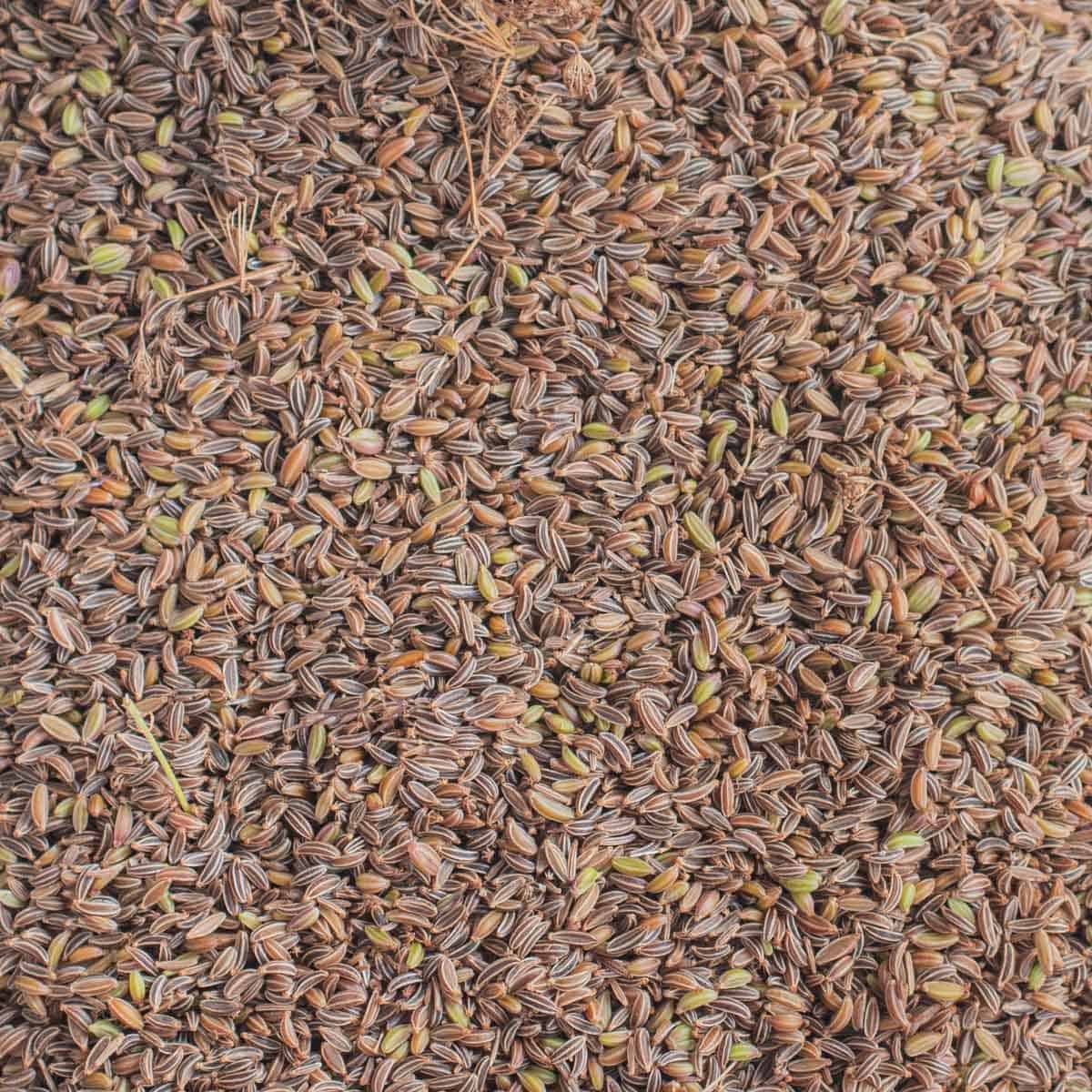
While I'm harvesting, I also make sure to shake plenty of plants and let the seeds fall to the ground, to encourage more to grow. I rooted out a few tansy plants here and there to give the caraway room to spread, too, but don't tell anyone. I'm planning on planting some closer to me next year, too, to make it more accessible.
 Cooking with the whole plant
Cooking with the whole plant
Sam discusses this in his essay, and he is dead-on. We think of caraway (and a lot of other plants) as having only 1 part: the seed. But, There's a bunch of different parts here. We just don't get exposed to them as green seeds, leaves and roots have a shorter shelf life than dried seeds, and that means it's harder for a grower to make money from them.
Root
The ones I've seen are very small, but it has the same aromatic components that the seeds do. So far the only thing I've done with it is use it to infuse an aquavit made with the whole caraway plant. See that below.
Leaves
To be used like carrot leaves. The flavor is mild, and reminiscent of garden carrot leaves. It doesn't taste strong like the seeds, its more vegetal. These need to be cooked to become soft, like you would carrot leaves. These are what is used to make the traditional Karvekalsuppe, or Norwegian caraway soup.
Mature Seed
The caraway we know and love. You can use them just like caraway from the store. Dehydrate it after picking.
Green Seed
Just like coriander, the seeds of caraway are great fresh, and can be used with a little heavier hand (a little) than the mature seeds. I like to preserve them in brine and hold in the cooler for preservation.
A solution of 5% brine (5% grams of salt for every 5 grams of water) worked well, afterwords they can be dried off and sprinkled on things, with an intense flavor similar to fresh. Excellent with raw meat and cured fish, especially lox.
Recipes
- Scandinavian Beef Broth with Wild Caraway and Morels
- Saag Paneer, with Wild Caraway and Amaranth
- Fermented Root Vegetables with Wild Caraway
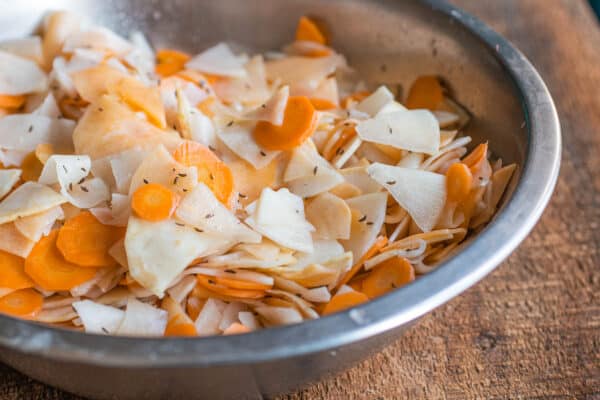

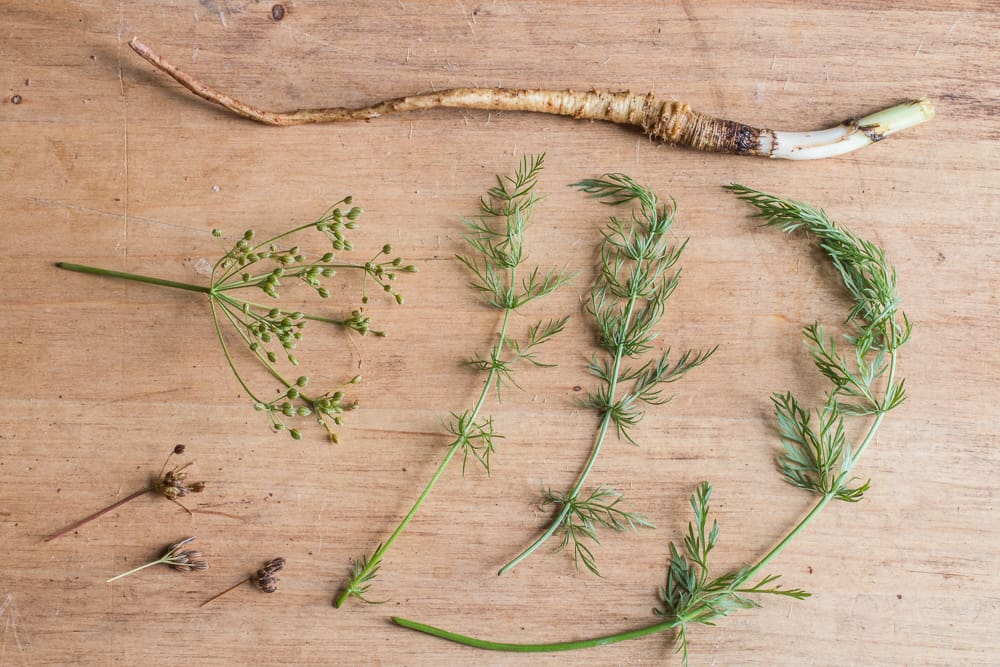 Cooking with the whole plant
Cooking with the whole plant
elizabeth
caraway cake ( a pound -type cake) with hefty amount of carraway seed was a real favourite in my childhood here on the Welsh Marches - narrow strip of land between England and Wales.
So glad I found you, Forager Chef. The recipes are a real joy..
Alan Bergo
Elizabeth! I had a sneaking suspicion that my wild caraway would make a good poundcake, so that is really helpful. Thanks for the info, now I'm off to research caraway cake. Alan.
Laurie
Hi Alan,
As far as I can tell, this is a weed that does not grow in New England. Do you have any information on where it grows? I've been able to learn that it, like Queen Anne's Lace was introduced, and that it is considered invasive in parts of British Columbia and the upper mid-west of the US. QAL is also considered invasive in some of these areas. It sounds like the plant prefers slightly cooler summers perhaps than we have in New England. Finland is the number one producer of the seed and I assume their summers are cooler than ours here.